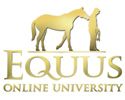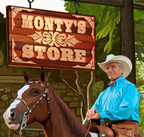https://www.montyrobertsuniversity.com/training/2031189243
I have enormous respect for Monty's methods, experience, and results. I understand the need to give immediate correction – what he calls “scolding” – and yet it seems mildly pain-inducing. This seems inconsistent with the general principal of no pain and no force. Thanks for any thoughts in response!




All well-meaning questions and reactions in this forum are welcome because we are here to be good students. Whether you are the one asking, or one of the readers, likely you will encounter this assertion at some point when handling aggressive horses. Please remember that my critics are my best friends and it took your critical comments to cause me to re-investigate Dream, for that I am quite grateful.
After reading Monty's response to your request, I just wanted to add a couple remarks.
First off I am on the UNI web site everyday reading the Forum or going over another lesson that I need desperately to rehearse or teach myself,
I watched both videos you mentioned, and, I, also heard the word scold in both videos. And more than once in one of them. But I am also reminded of my childhood growing up around my dad. Who I might mention was a lot like Monty with his actions towards animals. Absolutely no violence.
My comment is that as a youngster I was Scolded many, many ,many, times while I was in the process of being Schooled.
I completely understand your comment about where is the line is between force or pain or negative consequences and positive consequences.
I guess that's a lesson we must teach ourselves and make sure when we do scold or school, and we must be quick with our response to make sure it causes no pain or violence, and a PIC for the horse we are schooling.
I do have to add that I've been working with horses over 60 yeas and I find myself in School almost everyday.
Sometimes from the Scolding I get from the horse.
Best wishes and I pray that you are satisfied with what you read.
Again, was a great question you posted
Connie Mack